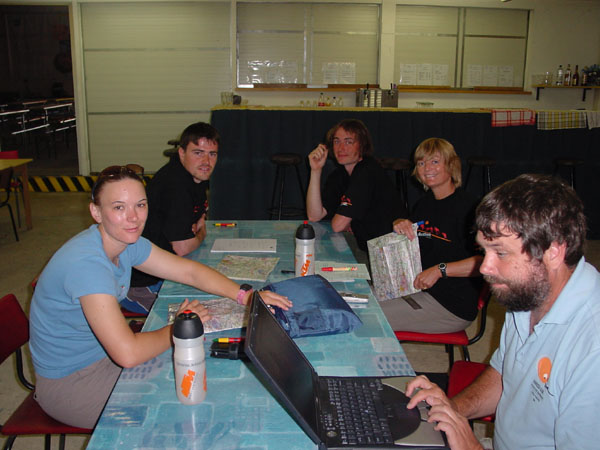
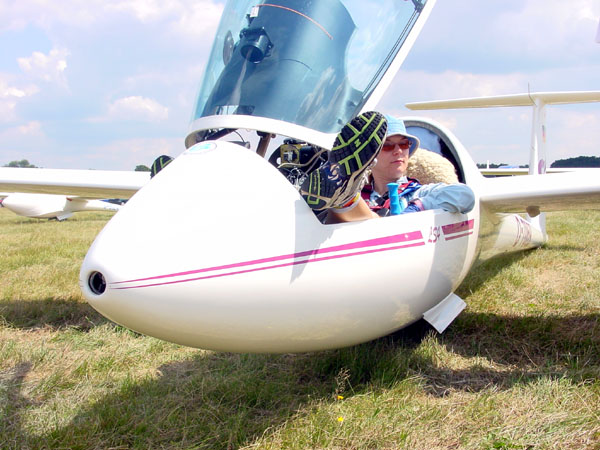
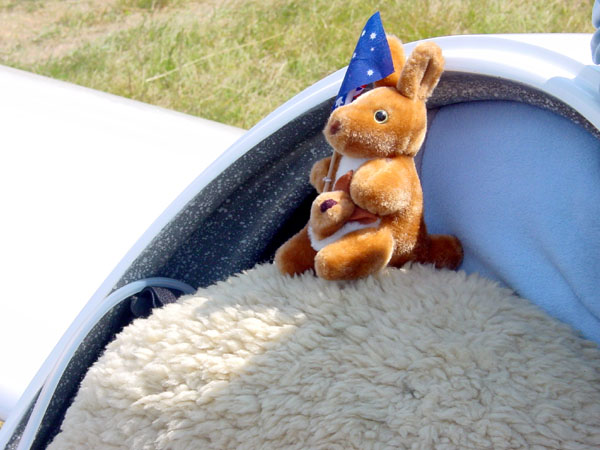
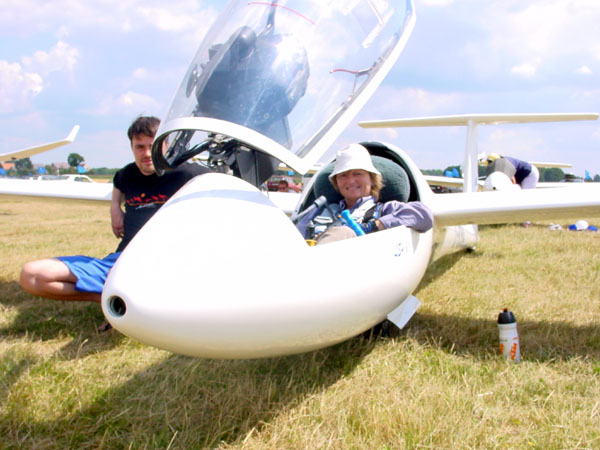
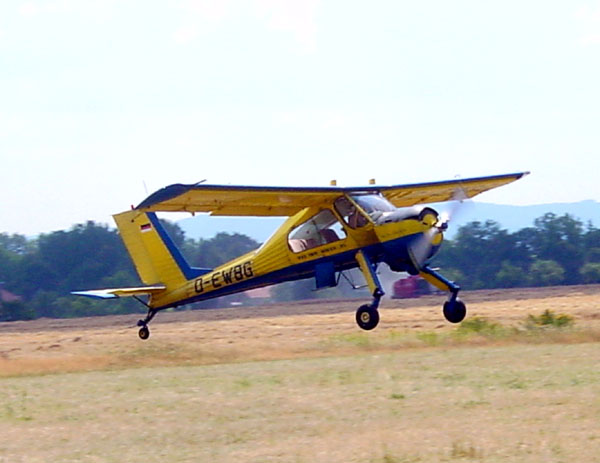
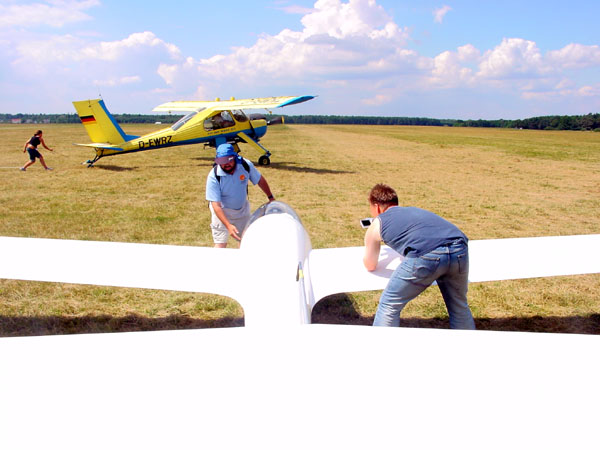
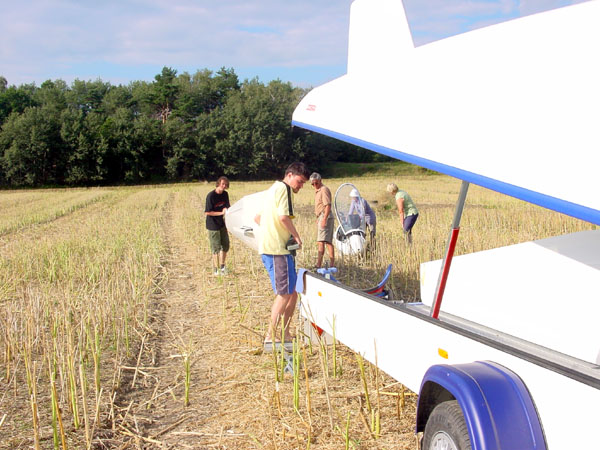
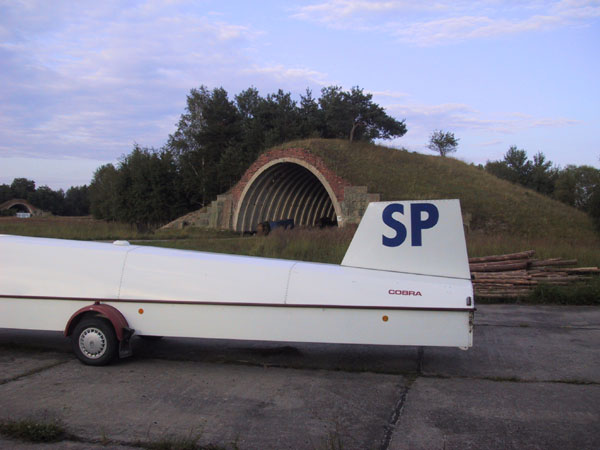
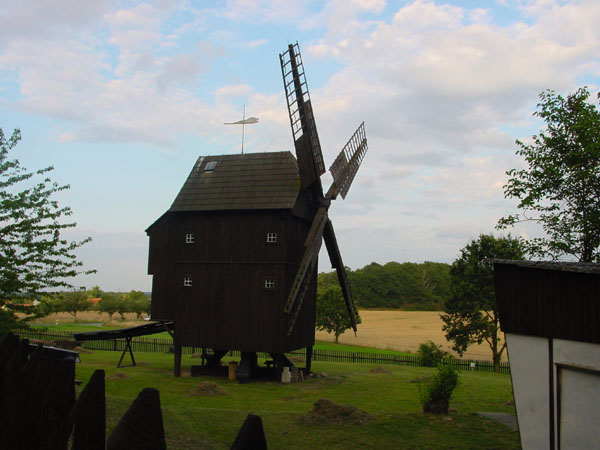
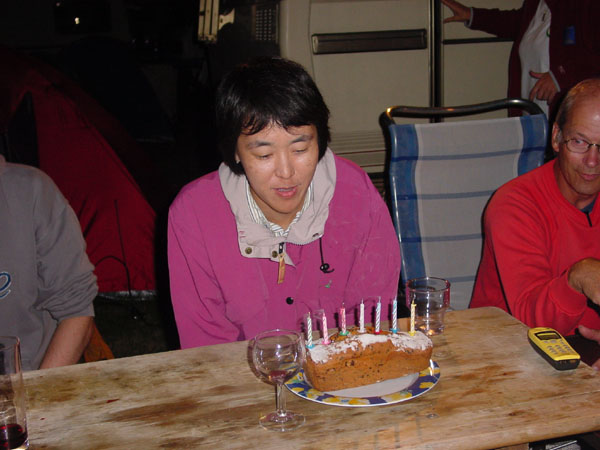
We have a new crew this morning. Sonja has gone home and Mattias and Gunnor have come to crew. Matt spent some time at Benalla in the workshop so some of you may remember him. He was at the Khancoben 2001 camp and remembers seeing a Bergfalke flown by a couple, and a Ventus with a tall curly haired pilot…
Following the briefing, we had our translation and the team meeting. The task for Standard class is a bit different from previous days in that it goes South after first heading West, and then has only a narrow corridor between airspace and the Czech border.
The sky was lovely -- lots of white puffy Cu when the girls launched to do a 370 km flight.
Ralph and I headed into town to do some shopping We'd invited Akemi for dinner for her birthday. Ralph was making sushi and I was doing teriyaki chicken shaslicks and veggie and noodle stirfry.
We were in the veggie section in the supermarket when the phone rang. Those of you who have crewed before know how you go on instant alert when any phone rings. It came up with “TROTTS YELLOW” – the outlanding phone supplied by the competition.
I copied the GPS coordinates onto the shopping list, then had a call from Keith who was in Bautzen too and offered to pick me up in front of the supermarket. I handed Ralph the list and some money and bolted.
Turns (IGC trace) was also down on a military airfield – Trotts (IGC trace) was in a nearby paddock.
The report was that the undercarriage on Trotts LS4 had collapsed, so Keith went to get Turns by himself while Matt, Gunnor and I went in the Rav 4 to get Trotts.
We followed the GPS and arrived after more than an hour of driving. 65km takes time to drive when you keep going through 30kph zones in towns or getting stopped or diverted by roadworks.
Lisa was in a cut canola paddock – bugger – should have worn long pants. We parked the trailer as close to the glider as we could and derigged the wings and tailplane – and carried them to the trailer. We then lifted the fuselage and dropped the gear. Damage was minimal. The doors and gear were fine. One of the door springs was a little stretched but we had spare springs. There was a small spilt in the nose under the rudder pedal area, which was where the joining of the two fuselage 1/2 s had failed.
We put it in the trailer, and rang Helge to report on the condition of the glider. Helge had arranged for a nearby workshop to repair the glider overnight but from the report, he thought that would not be necessary.
On arriving back at the airfield, we pulled the fuselage out and inspected it carefully all over including removing the seat pan to check the crack from the inside, and to mop up some water that had spilt.
It was OK so the crew started to clean the glider while Helge rang the owner of the glider. He runs a repair shop so he was not at all worried and said he will repair it over winter.
Akemi had also landed out so the dinner/birthday part was a bit late. We ate in the dark, but it was good fun and Ralph had even organized a birthday cake with candles. I think Akemi enjoyed herself. Her crew used to work for LS doing control fitout including undercarriages. We invited Lisa to get stuck into him and all had a good laugh.
Talking to Helge and Swaanje, I made a list below of some of the suggestions they made for flying in European conditions.
- Cannot win on a weak day but you can lose
- Large deviations or parking may be necessary
- Just get home – doesn't matter about speed
- Large clouds are less likely to work but are better to search with a pilot pair
- When near cloudbase and cannot see ahead, look at cloud shadow patterns on ground
- When overdeveloped, look for sunny areas on the ground
We finished near the bottom of the field with less than 200 points. A disappointing day, but an opportunity to learn a lot about the conditions here.